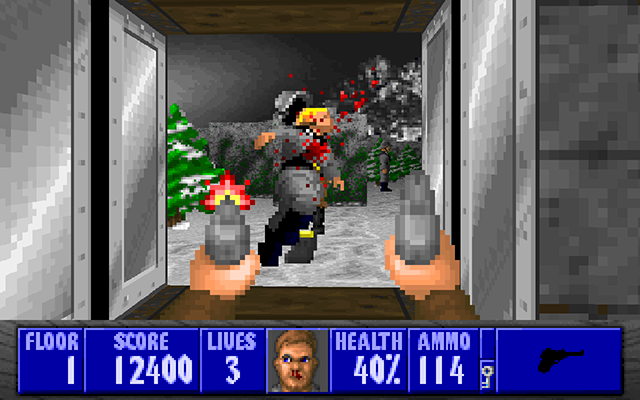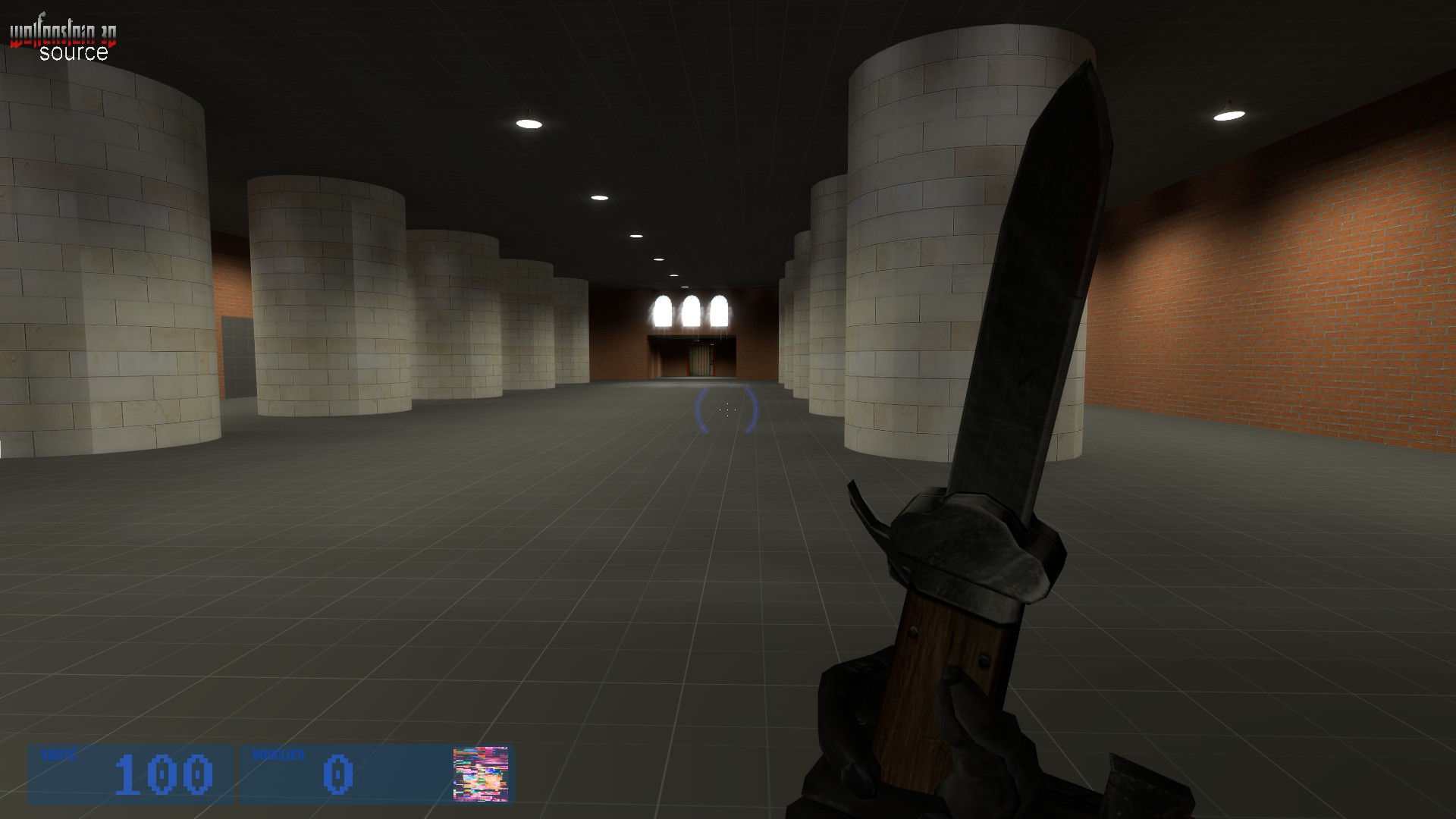

- #Wolfenstein 3d final boss manual#
- #Wolfenstein 3d final boss software#
- #Wolfenstein 3d final boss Pc#
It’s hard to know how many people actually used boss keys back in the day, but they were common enough in games that someone must have found them useful. RELATED: PCs Before Windows: What Using MS-DOS Was Actually Like Did Anyone Actually Use Boss Keys? Some, like Hugo’s House of Horrors, even include a real DOS prompt (press F9) and kept the game resident in memory so it can be resumed when ready. Wolfenstein 3D (1992): If you press F1, you see a fake “C>” MS-DOS prompt.Īlthough dozens of other games used boss screens over the years, most feature a fake spreadsheet or a DOS prompt.Blox (1990): This Tetris clone includes a semi-functional spreadsheet you can actually type in and manipulate instead of just being a static screen.Star Wars (1989): Pressing F4 in this arcade port displays one of the most sophisticated boss key screens ever made, which lets you select between a simulated interactive spreadsheet, a programmer credits menu, and a rotating 3D Broderbund logo you could move around on the screen, and more.During the game, pressing Escape shows a different screen, a fake “A>” DOS prompt. Tetris (1987): Press Escape at the menu screen, and you’ll see a fake spreadsheet.Spitfire Ace (1984): If you press “]” in this dogfighting game, you’ll see a simulated spreadsheet on the screen.



Type “rogue” on the command line to get back to the game.
#Wolfenstein 3d final boss Pc#
Which Games Included Boss Keys? Pressing Escape in Tetris on the IBM PC gave you this plain “A>” DOS prompt.
#Wolfenstein 3d final boss manual#
From a search on the Internet Archive and magazine databases, it seems like the term “boss key” originated somewhere around 1984, as seen in the manual for Spitfire Ace, for example. Alternately, some programs refer to them as “boss buttons” or “panic buttons.” In 1985, Transactor magazine called boss keys a “Someone’s Coming” mode. Over time, boss keys have had different names. Whether Bezare or Asylum introduced the boss key idea first isn’t entirely clear without deeper research, but it’s possible that multiple people came up with the concept independently. If you pressed F9 during gameplay, the screen would clear, which was “added for those who will be trying to escape from Asylum during work hours,” according to PC Magazine, apparently quoting a user manual. The first known boss key screen, in Bezare for Apple II (1982).Ī similar boss key concept (called “Suspend Game”) appeared in the adventure game Asylum for the IBM PC in 1982. Pressing any key again will return to the game. In the game, if you press Ctrl+W, a faux spreadsheet display will take over the screen. His concept found its way into Bezare, a 1982 Apple II space shooter game developed by John Besnard and published by Southwestern Data Systems.
#Wolfenstein 3d final boss software#
Pioneering software developer Roger Wagner claims he invented the idea of the boss key in 1981. RELATED: 40 Years Later: What Was it Like to Use an IBM PC in 1981? Who Invented the Boss Key? More exclusive PC gaming in the office translated into a greater need to hide the activity, hence the boss key. Also, The Encyclopedia of Video Games speculates that boss keys were more popular when PC clones were more expensive and more likely to be located at work than in the home. Back then, most MS-DOS PCs were single-tasking machines, so you couldn’t quickly Alt+Tab away from the game to another window like you can today. IBMĪ few factors likely made boss keys within games more common in the 1980s and early 1990s than they are today. Working on the PC in the 1980s sometimes involved lots of graphs and spreadsheets. It’s a special key on the keyboard that would clear the game screen and display a fake screen (such as a spreadsheet, business-looking graphs, DOS prompt, or even a blank screen) that would make it look like you’re actually doing work-or just hide the game. You have an IBM PC or an Apple II that can run only one program at a time, so if you run a game, your boss might walk in and see that you’re not working. It’s the early 1980s, and you’re procrastinating at work.


 0 kommentar(er)
0 kommentar(er)
